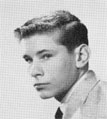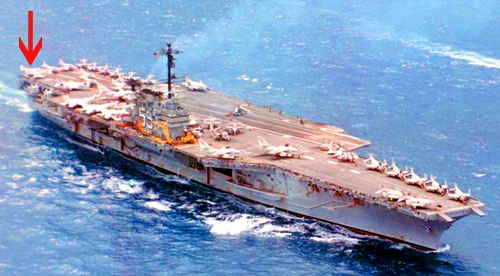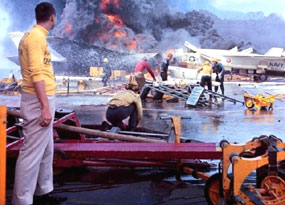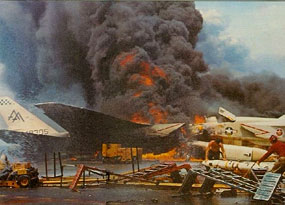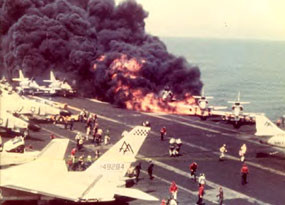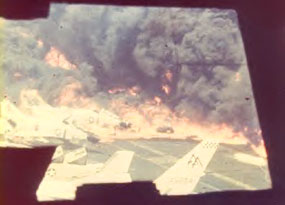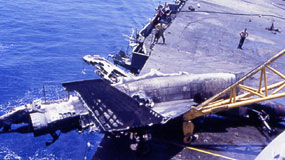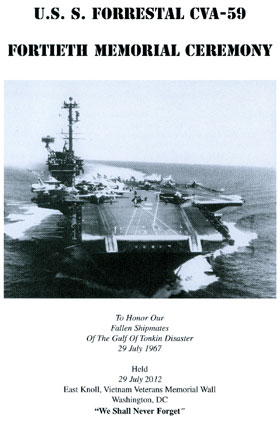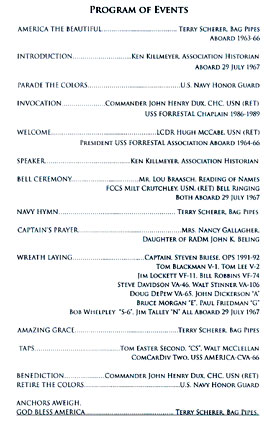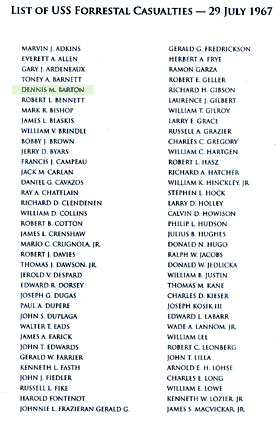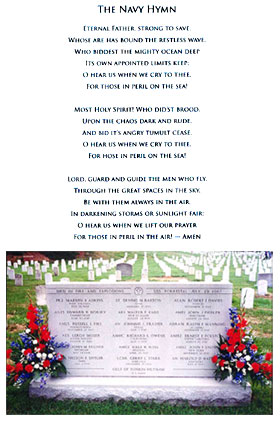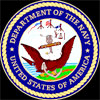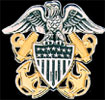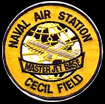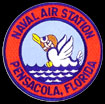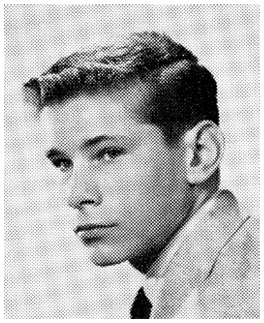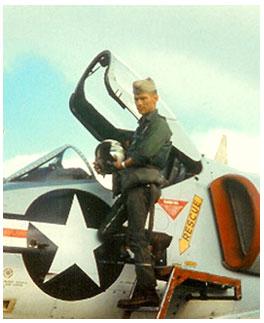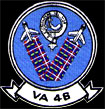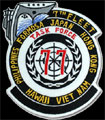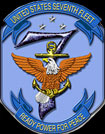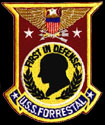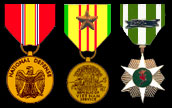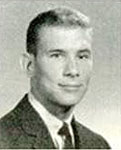USS
Roosevelt (DDG-80)
Checking out this entry.
McDonnell Douglas A-4E Skyhawk
The Douglas A-4 Skyhawk is a carrier-capable attack aircraft developed
for the United States Navy and United States Marine Corps. The delta
winged, single-engined Skyhawk was designed and produced by Douglas
Aircraft Company, and later by McDonnell Douglas. It was originally
designated the A4D under the U.S. Navy's pre-1962 designation system.
The Skyhawk is a light-weight aircraft with a
maximum takeoff weight of 24,500 pounds (11,100 kg) and has a top speed
of more than 600 miles per hour (970 km/h). The aircraft's five hardpoints
support a variety of missiles, bombs and other munitions and was capable
of delivering nuclear weapons using a low altitude bombing system and
a "loft" delivery technique. The A-4 was originally powered
by the Wright J65 turbojet engine; from the A-4E onwards, the Pratt
& Whitney J52 was used.
Skyhawks played key roles in the Vietnam War, the Yom
Kippur War, and the Falklands War. Fifty years after the aircraft's
first flight, some of the nearly 3,000 produced remain in service with
several air arms around the world.
Attack Squadron VA-46 or ATKRON 46
Attack Squadron 46 (VA-46 or ATKRON 46) was an attack squadron of
the United States Navy that was active during the Cold War. VA-46 was
deactivated as part of the post-Cold War drawdown of forces on 30 June
1991.
On 25 July 1967 the Clansmen took part in their first
combat operations during the Vietnam War flying from the USS Forrestal
in Yankee Station. A few days later on July 29, while aircraft were
being prepared for the second launch of the day against targets in North
Vietnam, a fire broke out on the flight deck of the Forrestal. Flames
engulfed the fantail and spread below decks, touching off bombs and
ammunition. Heroic efforts by VA-46 personnel, along with other members
of Carrier Air Wing 17 and ship's company, brought the fires under control.
Damage to the carrier and aircraft was severe, and the casualty count
included 134 dead and 62 injured. The squadron lost seven A-4E Skyhawks
during the fire.
USS Forrestal (CVA-59)
The 1967 USS Forrestal fire was a devastating fire and series of chain-reaction
explosions on 29 July 1967 that killed 134 sailors and injured 161 on
the aircraft carrier USS Forrestal (CVA-59), after an electrical anomaly
discharged a Zuni rocket on the flight deck. Forrestal was engaged in
combat operations in the Gulf of Tonkin during the Vietnam War at the
time, and the damage exceeded US$72 million (equivalent to $509 million
today) not including damage to aircraft. Future United States Senator
John McCain was among the survivors.
Forrestal had departed Norfolk, Virginia in early June 1967. Upon completion
of the required inspections for the upcoming WESTPAC Cruise, she then
went on to Brazil for a show of force. She then set sail around the
horn of Africa, and went on to dock for a short while at Leyte Pier
at N.A.S. Cubi Point in the Philippine Islands before sailing to "Yankee
Station" in the Gulf of Tonkin on 25 July. For four days in the
gulf, aircraft of Attack Carrier Air Wing 17 flew about 150 missions
against targets in North Vietnam.
By 1967, the ongoing naval bombing campaign from Yankee
Station represented by far the most intense and sustained air attack
operation in the navy's history, with monthly demand for general purpose
bombs ("iron bombs") greatly exceeding new production. The
on-hand supply of bombs had dwindled throughout 1966 and become critically
low by 1967, particularly the new 1000-lb. Mark 83, which the navy
greatly favored for its power-to-size ratio: a carrier-launched A4
Skyhawk, the navy's standard ground attack aircraft of the period,
could carry either a single 2000-lb. bomb, or two 1000-lb. bombs,
with the ability to strike two separate hardened targets in a single
sortie being seen as more desirable in most circumstances. Until 1971,
the US Air Force's primary ground attack aircraft in Vietnam was the
much heavier land-based F-105 Thunderchief which could carry 2 2,000-lb.
M118 bombs and 4 750-lb. M117 bombs (both of which had large stockpiles
available) simultaneously on a single sortie, and thus did not need
to rely as heavily on the limited supply of 1000-lb. bombs the way
the navy did.
In training, the damage control team specializing in
on-deck firefighting for Forrestal (Damage Control Team #8, led by
Chief Petty Officer Gerald Farrier) had been shown films of navy ordnance
tests demonstrating how a 1000-lb bomb could be directly exposed to
a jet fuel fire for full 10 minutes and still be extinguished and
cooled without an explosive cook off. However, these tests were conducted
using the new Mark 83 1000 lb bombs which featured relatively stable
Composition H6 explosive filler and thicker, heat-resistant cases
compared to their predecessors; H6, which is still used in many types
of naval ordnance due to its relative insensitivity to heat, shock
and electricity, is also designed to deflagrate instead of detonate
when it reaches its ignition point in a fire, either melting the case
and producing no explosion at all or at most a subsonic low order
detonation at a fraction of its normal power.
The day before the accident (28 July), the Forrestal
was resupplied with ordnance from the ammunition ship USS Diamond
Head. The load included 16 1000-lb. AN-M65A1 "fat boy" bombs
(so nicknamed because of their short, rotund shape), which the Diamond
Head had picked up from the Subic Bay Naval Base and were intended
for the next day's second bombing sortie. The batch of AN-M65A1 "fat
boys" the Forrestal received were surplus from World War II,
having spent roughly three decades exposed to the heat and humidity
of the Philippine jungles while improperly stored in open-air Quonset
huts at a disused ammunition dump on the periphery of Subic Bay Naval
Base. Unlike the thick-cased Mark 83 bombs filled with Composition
H6, the AN-M65A1 bombs were thin-skinned and filled with Composition
B, an older explosive with greater shock and heat sensitivity; Composition
B also had the dangerous tendency to become more powerful (up to 50%
by weight) and more sensitive if it was old or improperly stored.
The Forrestal's ordnance handlers had never even seen an AN-M65A1
before, and to their shock the bombs delivered from the Diamond Head
were in terrible condition; coated with "decades of accumulated
rust and grime" and still in their original packing crates (now
moldy and rotten), some were stamped with production dates as early
as 1935. Most worryingly of all, several bombs were seen to be leaking
liquid paraffin phlegmatizing agent from their seams, an unmistakably
dangerous sign the bomb's explosive filler had degenerated with excessive
age and exposure to heat and moisture.
According to A-4 Skyhawk pilot Lieutenant Rocky Pratt,
the concern and objection induced in the Forrestal's ordnance handlers
was striking, with many afraid to even handle the bombs; one officer
wondered out loud if they would even survive the shock of a catapult
assisted launch without spontaneously detonating, and others suggested
they immediately jettison them into the sea. Since no one wanted to
be responsible for scrubbing the next day's missions, the decision
was made by the Forrestal's ordnance officers to report the situation
up the chain of command to Captain John Beling and inform him the
bombs were, in their assessment, an imminent danger to the ship and
should not be kept on board.
Faced with this, but still needing 1000-lb. bombs for
the next day's missions, Beling demanded the Diamond Head take the
AN-M65A1s back in exchange for new Mark 83s, but was told by the Diamond
Head that they had none available to give him. The AN-M65A1 bombs
had been returned to service specifically because there were not enough
Mark 83s to go around. According to one crew-member on the Diamond
Head, when they had arrived at Subic Bay to pick up their load of
ordnance for the carriers, the base personnel who had prepared the
AN-M65A1 bombs for transfer assumed the Diamond Head had been ordered
to dump them at sea on the way back to Yankee Station; when notified
that the bombs were actually destined for active service in the carrier
fleet, the commanding officer of the naval ordnance detachment at
Subic Bay was so shocked he initially refused the transfer, believing
a paperwork mistake must have been made. At risk of delaying the Diamond
Head's departure, he refused to sign the transfer forms until receiving
written orders from CINCPAC on the teletype explicitly absolving his
detachment of responsibility for their terrible condition.
With orders to conduct strike missions over North Vietnam
the next day and no replacement bombs available, Captain Beling reluctantly
concluded he had no choice but to accept the AN-M65A1 bombs in their
current condition. In one concession to the demands of the ordnance
handlers, Beling did agree to store all 16 bombs alone on deck in
the "bomb farm" area between the starboard rail and the
carrier's island until they were loaded for the next day's missions;
standard procedure would have been to store them in the ship's magazine
with the other bombs (where an accidental detonation could easily
destroy the entire ship).
Fire[edit]At about 10:50 (local time) on 29 July, while
preparations for the second strike of the day were being made, an
unguided 5.0 in (127.0 mm) Mk-32 "Zuni" rocket, one of four
contained in a LAU-10 underwing rocket pod mounted on an F-4B Phantom
II, accidentally fired due to an electrical power surge during the
switch from external power to internal power. The surge originated
from the fact that high winds had blown free the safety pin, which
would have prevented the fail surge, as well as a decision to plug
in the "pigtail" system early to increase the number of
takeoffs from the carrier (see below).
A drawing of the stern of Forrestal showing the spotting
of aircraft at the time (below). Likely source of the Zuni was F-4
No. 110. White's and McCain's aircraft (A-4s No. 405 and 416, respectively)
are in the right hand circle.The rocket flew across the flight deck,
striking a wing-mounted external fuel tank on an A-4E Skyhawk awaiting
launch, aircraft No. 405, piloted by Lieutenant Commander Fred D.
White.The Zuni Rocket's warhead safety mechanism prevented it from
detonating, but the impact tore the tank off the wing and ignited
the resulting spray of escaping JP-5 fuel, causing an instantaneous
conflagration. Within seconds, other external fuel tanks on White's
aircraft overheated and ruptured, releasing more jet fuel to feed
the flames, which began spreading along the flight deck.
The impact of the Zuni had also dislodged two of the
1000-lb AN-M65 bombs, which fell to the deck and lay in the pool of
burning fuel between White and McCain's aircraft. Damage Control Team
#8 swung into action immediately, and Chief Gerald Farrier, recognizing
the risk and without benefit of protective clothing, immediately smothered
the bombs with a PKP fire extinguisher in an effort to knock down
the fuel fire long enough to allow the pilots to escape. The pilots,
still strapped into their aircraft, were immediately aware that a
disaster was unfolding, but only some were able to escape in time.
Lieutenant Commander John McCain, pilot of A-4 Skyhawk side No. 416
next to White's was among the first to notice the flames and escaped
by scrambling down the nose of his A-4 and jumping off the refueling
probe shortly before the explosions began.
Damage Control Team #8 had been assured of a 10 minute
window in which to extinguish the fire and prevent the bombs from
detonating, but the Composition B bombs proved to be just as unstable
as the ordnance crews had initially feared; after only slightly more
than 1 minute, despite Chief Farrier's constant efforts to cool the
bombs, the casing of one suddenly split open and began to glow cherry
red. The chief, recognizing a lethal cook-off was imminent, shouted
for his team to withdraw, but the bomb detonated seconds later –
a mere one minute and 36 seconds after the start of the fire.
The detonation destroyed White and McCain's aircraft
(along with their remaining fuel and armament), blew a crater in the
armored flight deck, and sprayed the deck and crew with bomb fragments
and burning fuel. Damage Control Team #8 took the brunt of the initial
blast; Chief Farrier and all but three of his men were killed instantly;
the survivors were critically injured. Lieutenant Commander White
had managed to escape his burning aircraft but was unable to get far
enough away in time; White was killed along with the firefighters
in the first bomb explosion. In the tightly packed formation on the
deck, the two nearest A-4s to White and McCain's (both fully fueled
and bomb-laden) were heavily damaged and began to burn, causing the
fire to spread and more bombs to quickly cook off.
Lieutenant Commander Herbert A. Hope of VA-46 (and
operations officer of CVW-17) was far enough away to survive the first
explosion, and managed to escape by jumping out of the cockpit of
his Skyhawk and rolling off the flight deck and into the starboard
man-overboard net. Making his way down below to the hangar deck, he
took command of a firefighting team. "The port quarter of the
flight deck where I was", he recalled, "is no longer there."
Two other pilots (Lieutenant Dennis M. Barton and Lieutenant
Commander Gerry L. Stark) were also killed by explosions during this
period, while the rest were able to escape their aircraft and get
below.
Nine bomb explosions eventually occurred on the flight
deck, eight caused by the AN-M56 Composition B bombs cooking off under
the heat of the fuel fires and the ninth occurring as a sympathetic
detonation between an AN-M56 and a newer 500 lb M117 H6 bomb that
it was lying next to on the deck. The other Composition H6-based bombs
performed as designed and either burned on the deck or were jettisoned,
but did not detonate under the heat of the fires.
The explosions (several of which were estimated to
up to 50% more powerful than a standard 1000 lb bomb due to the unintentionally-enhanced
power of the badly degraded Composition B) tore large holes in the
armored flight deck, causing flaming jet fuel to drain into the interior
of the ship, including the living quarters directly underneath the
flight deck, and the below-decks aircraft hangar.
Sailors and marines controlled the flight deck fires
by 1215, and continued to clear smoke and to cool hot steel on the
02 and 03 levels until all fires were under control by 1342. The fire
was not declared defeated until 0400 the next morning, due to additional
flare-ups.
Throughout the day the ship’s medical staff worked
in dangerous conditions to assist their comrades. HM2 Paul Streetman,
one of 38 corpsmen assigned to the carrier, spent over 11 hours on
the mangled flight deck tending to his shipmates. The large number
of casualties quickly overwhelmed the ship’s sick bay staff,
and the Forrestal was escorted by USS Henry W. Tucker to rendezvous
with hospital ship USS Repose at 2054, allowing the crew to begin
transferring the dead and wounded at 2253.
Links regarding USS Forrestal (CVA-59) fire:
http://mrhugs2.tripod.com/forrestal.htm
http://mrhugs2.tripod.com/index.html
utube video of incident (poor quality): http://www.youtube.com/watch?v=chuiyXQKw3I
Note: At Denny's memorial held in Des Moines, his widow
told Dick Riley that Denny had been able to evacuate his pilot's position,
but his navigator could not free himself because his cockpit's hood
was jammed. Denny went to rescue his navigator. They both perished.
Note from USS Forrestal historian: Denny did successfully exit aircraft
#410, an A-4E Skyhawk. He was seen running away from his aircraft
heading forward on the flight deck when the first 1,000 lb. bomb exploded,
killing Denny. The A-4E Skyhawk did not have a navigator, so perhaps
Denny was attempting to rescue a navigator from another aircraft.
Other aircraft models on the flight deck included the F-4B Phantom
which accommodated a navigator.
Receiving memorial programs from the 2002,2007,2012 ceremonies held
at the Vietnam Memorial Wall. Those programs will be incorporated
into Denny's page upon receipt.
|
